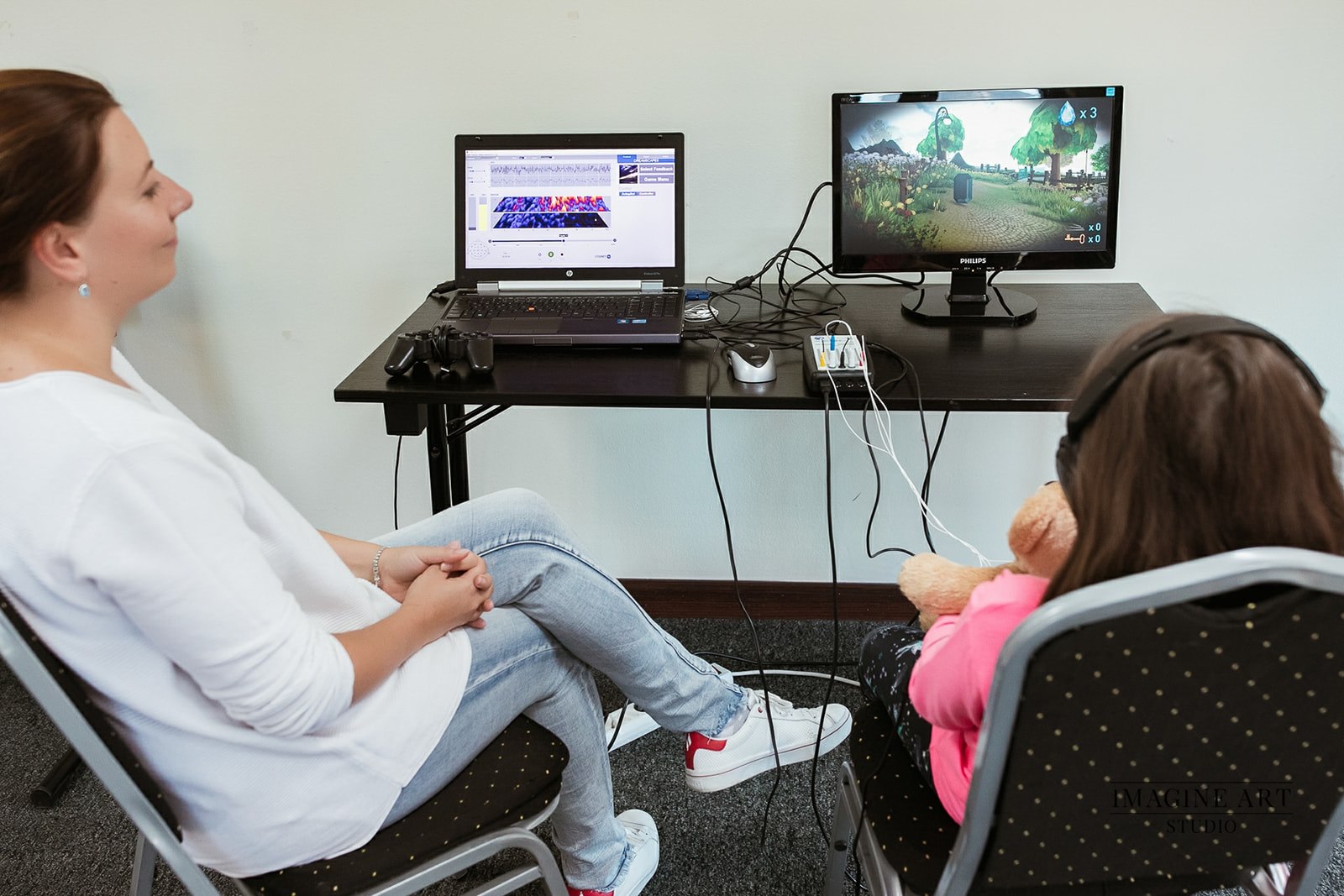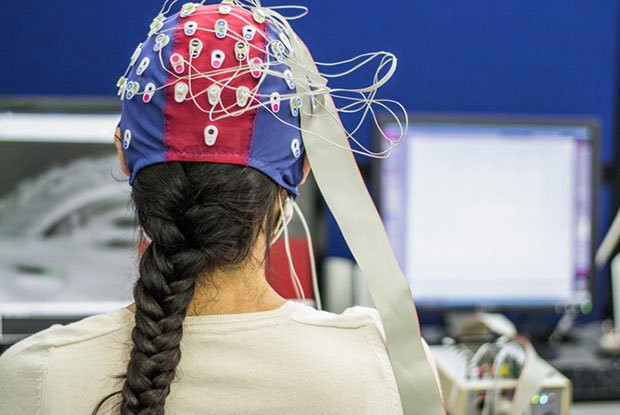We recommend neurofeedback training along with therapy because it decreases symptoms of trauma, ADHD, depression, and anxiety as well as increases focus and emotional balance.
The team at Bright Counseling helps teens and adults recover from trauma and improve their behavior. We provide compassionate counseling and make it even more effective by combining it with mindfulness techniques and at-home neurofeedback training.
Read one mother’s experience with neurofeedback for her son.

Neurotherapy starts with creating a map of your brain using scalp sensors (on a cap) that measure your brain’s electrical activity. This brain map is incredibly accurate at identifying problematic areas in the brain, and we use this map to create a personal treatment program for you or your child. There is no one-size-fits-all solution for therapy or neurofeedback. Your treatment program should be tailored to your brain. The brain-map is completed in the comfort of your own home.
“Moreover, as can be found in the ISNR Comprehensive Bibliography (www.isnr.org/resources), ISNR’s official peer-reviewed scientific journal NeuroRegulation (www.neuroregulation.org), and the archives of ISNR’s Journal of Neurotherapy (www.isnr-jnt.org), the research literature is substantial. For example, 1,447 peer reviewed journal articles are cited in the National Library of Medicine when using the search terms: ‘EEG Biofeedback’, and in recent years there has been exponential growth in publications related to neurofeedback.”
For a scientific explanation of neurofeedback, see the article “What Is Neurofeedback: An Update” (Journal of Neurotherapy), written by Dr. Hammond of Salt Lake City, Utah. History of Neurofeedback.
Neurofeedback is FDA approved for Alpha Training/Relaxation.
See also “The Benefits of Neurofeedback and How It Can Help YOU” from the Amen Clinics.

One mother gave us permission to share her story about her son, “Jason,” and his experience with neurofeedback:
“Jason is my 11-year-old son. As an infant and toddler he was very quiet and shy. I used to pray to hear him laugh, giggle or chatter, but he never did. We had him tested for autism but he came back within normal and we were told that he is just ‘quiet but smart.’
“He did very well in school for the first few years. He had a few close friends and played soccer; he went to church and scouts. When he was in 4th grade, our family moved. Although he stayed at the same school, this move was very difficult for Jason. He stopped attending church and scouts. He stopped soccer. He still had close friends but they were in different classes in school.
“Jason started to resent school and began to have stomach aches. He was throwing up daily, and we wouldn’t send him to school. We eventually pulled him out of school and did online/home school. He was happier, but his grades were still poor and he had trouble staying on task. He didn’t spend time with friends and was very lonely.
“As parents, we were very confused. What had happened to our sweet child that made him seem so sad? We looked into counseling and he went once or twice but he said he didn’t have anything to talk about. We spoke to our pediatrician who recommended that we try neurofeedback before we try medications. We started neurofeedback and after about 10 sessions we saw some small improvements; he could focus better and his sleep improved. We were hopeful, so we continued.
“Jason completed about 25 neurofeedback sessions during the summer between 5th and 6th grade. He is now in 6th grade and is much happier. He is back at public school. No stomach aches, no throwing up. He has been back with his previous close friends and goes to birthday parties. He joined orchestra and has been learning to play the viola. He even decided to run for student council and was excited when he was voted by his peers to be a leader! His grades are doing well and he is much happier. I credit his success to the neurofeedback sessions and am so grateful we decided to try neurofeedback with Jason.”


Step 1 – Learn about Brain Map or Quantitative EEG
Step 2 – Learn about Neurofeedback Training
Step 3 – Schedule an Appointment with our online scheduler, or call 801-855-7999
Step 4 – Pay for Services
Electronic information sent to you every two months to help improve your mind and body functioning. Included tips for relaxation and increased focus.